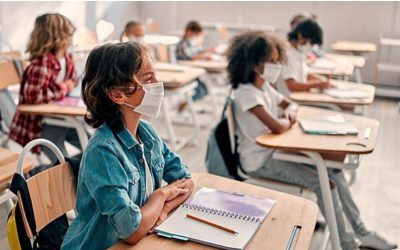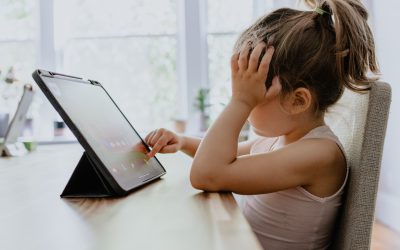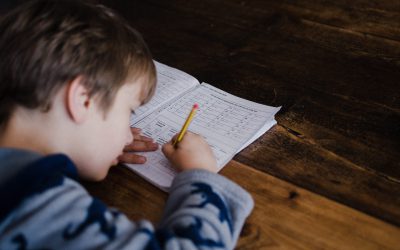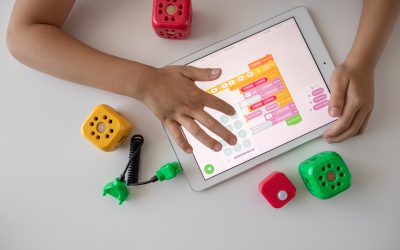COVID- News May 4- May 8
11 May 2020 | News
In this week’s news:
- opening schools with smaller groups: models for blended learning and research into the effectiveness of these models
- Reopening schools: priority for social-emotional development, assessing children’s learning progress, and final school year ‘celebrations’
- Parental concerns about school opening
- Reopening of secondary education in the Netherlands
- Teachers who are also parents: how to combine going back to work with home-schooling?
Prof. Dr. Melanie Ehren & Rukiye Turkeli
11-05-2020


Blending home-schooling and in-school teaching
As schools in the Netherlands are reopening to teach students in smaller groups, they have to combine in-school teaching and home-schooling. The guidelines of the Ministry of Education and the council for Primary Education ask schools to split classes in half and teach each group on full, alternating, days where the school also offers worksheets or other types of activities/online instruction for the remaining 50% of home-schooling. Within these guidelines, schools can decide on the teaching schedule and how to organize in-school teaching and home-schooling.
Some of the models to combine home-schooling and in-school teaching are:
- Half of the students in a class is taught in school, when the other half is home-schooled that day. The groups alternate in-school teaching and home-schooling where home-schooling is structured according to one of the following three options:
- Students practice skills they have been taught the day before (in-school), using worksheets or other activities (either online or on paper), with (when possible) stand-by online support from teaching assistants or teachers with health risks.
- Choosing the principle of flipping the classroom, whereby students watch (online) instruction of new skills at home watch and practice new skills in school.
- Following the principles of inquiry-based learning where students work on their own small project, question or area of interest (in the form of, for example, writing a paper about a self-chosen subject);
- Half of the students receive instruction in-school, while the second half of the group attends the instruction at home via webcam, see for further explanation here.
Which option is chosen depends on the school’s teaching philosophy, their past experience with online learning and students’ access to, and ability to work remotely, including the type of platforms staff have learned to use and online materials they have developed over the past week (e.g. videos, working with an online platform, working with a webcam or tool such as Google Hangouts) as well as the extent to which teachers are able to come to school safely.
Schools who have teachers with potential health risks on staff can also choose a model where these teachers provide online instruction to students on their home-schooling day, or where students can dial-in to ask questions about the activities they are required to do at home.
Combining in-school teaching and home-schooling
How do other countries open their schools? Which models of combined home-schooling and in-school teaching are they developing?
Scotland is opting for a blend of in-school and remote learning. Students would attend school in smaller groups part-time in blocks of a few days or even a week at a time, to enable deep cleaning of schools between groups. Remote learning will be supported by online materials based on the national curriculum.
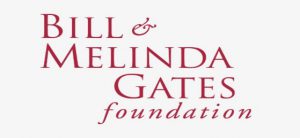
Schools in New York will work with the Bill & Melinda Gates Foundation to integrate remote learning into the regular school system. Schools are implementing a staggered timetable where children are accessing the school at different times, ensuring that all students have access to ICT facilities.
In India, remote learning has been part of the learning environment for a while with widespread availability of advanced platforms for online education. QR codes are linked to textbooks to expand access to digital resources (available offline as well).
Research on the effectiveness of such ‘blended learning’ or ‘flexible learning’ is particularly available for higher education, less so for primary and secondary levels. Examples from Finland, Malaysia, and India show that the quality assurance of online education is difficult, and that these models require careful consideration of what type of education can and cannot be delivered online. For primary and secondary education this means, for example, a careful choice in how to explain new subject matter in the classroom with practice of taught skills and worksheets at home.
The World Bank recommends continuing and developing a blended model of remote and in-school education in case a second COVID-19 contagion wave occurs. Such models, when properly developed, may become the new standard in the future, according to the World Bank.
Opening of primary schools in the Netherlands on May 11th
Primary schools in the Netherlands open on the 11th of May. The Ministry of Education, Culture and Science and the national council for Primary Education developed guidelines on reopening which ask schools to teach smaller groups on alternating full days to minimize interaction between students and parents and also allow students to go to day care after school.
A poll among nearly 1,700 school leaders and administrators shows that 92% of schools will follow these guidelines, where 45.1% of primary schools will split all classes in two to teach them on alternating days, while 21.2% is planning on teaching a whole class on the same day where each class goes to school on different days, with classes alternating between school days and alternating Wednesdays and/or Fridays. 14.8% of the schools will teach the entire class on 5 consecutive full days to enable teachers to see vulnerable children on a daily basis. 7.9% of the schools implement a model of teaching the whole group for half a day. The variation in models reflects the different teaching philosophies in schools, as well as school size and infrastructure. The differences in models however raises many questions and concerns with parents, according the organization “Parents and Education”.
Parents’ concerns

The association of parents in the Netherlands ‘Ouders and Onderwijs’ from parents who are concerned about their child’s school’s lack of compliance with national guidelines. They report of schools choosing a later start date then the 11th of May; schools which do not schedule for children from the same family to go to school on the same day; schools not making arrangements for children to attend after-school day care at adjusted school-time schedules, teaching of whole groups of children which doesn’t allow for social distancing between children, teaching only few hours a day (half a day or only 2 hours), not allowing first graders to go to school, and only partially opening schools for children with special needs.
A non-representative poll shows that 30% of about 15,000 parents are considering not to send their children back to school out of health concerns. The poll also indicates that 37% of school principals expect a problematic start, including due to parents who will keep their children at home (17.3%).
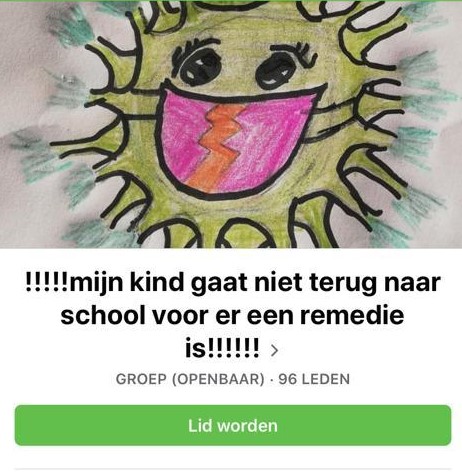
Picture of the Dutch Facebook group: “My child will not go to school until there is a cure.” Source: Facebook
In Denmark, the Facebook group “my child is not a guinea pig” was created with more than 11,500 signatures in less than 24 hours (much more compared to the Dutch version) as response to the announcement that schools will reopen. Despite this, some Danish schools report attendance rates above 90% (University of Glasgow, May 7, 2020). Although the opening of the schools generally went smoothly, it has been noticed that in the first weeks after reopening, schools in areas with low income, immigrants and high unemployment rates had to deal with higher rates of student absenteeism than usual. Uncertainty about the risk of contamination must be addressed by assuring parents that the school is a safe place.
Opening of schools: setting priorities
Now that most pupils return to school part-time, primary schools need to consider which parts of the curriculum to teach until the summer holiday and how to ensure children’s well-being, health and safety. The national council for Primary Education has developed guidelines to support schools in setting priorities: initially focusing on a sense of ‘together-ness’ and social cohesion: playing together, learning together, and experiencing together.
Suggestions on how to assess learning progress include so called ‘reversed learning conversations’ where parents report to the teacher about the progress of students (instead of teachers to parents).
In England, a consortium of school boards, the Queen Street Group, advocates paying more attention to a safe school culture in preparation for the reopening of schools. School leaders should focus on good hygiene and should make a good assessment of the risks in the school and how they can be mitigated; the group uses Covey’s “Circle of Control” concept to distinguish between circles of concern, influence and control.
Reopening of Secondary Education
Secondary schools in the Netherlands are allowed to open again from the first of June. The national council for Secondary Education has, in collaboration with, for example, the Ministry of Education, Culture and Science, developed a provisional protocol based on the government’s well-known guidelines. The protocol is different from primary education in advising schools to ensure social distancing between students in the lay-out of classrooms where tables must be at least 1.5 meters apart from each other. In addition, the canteen will remain closed and students will have to take lunch in their classroom.
Also, secondary school students should be taught as much as possible with the same peers to prevent interaction in the school. Students are also advised to cycle to school as much as possible. When students live more than 8 km away, the school must estimate the extent to which public transport offers a safe mode of transport or whether alternatives must be offered.
The guidelines also provide detailed measures for hygiene in the school (including washing hands when entering a new room, after lunch, etc.), staggering the start and end times of the lessons to limit interaction in the corridors.
The measures raise many questions on social media, particularly about whether it makes sense to implement an extensive package of rules for the relatively short period of time before the summer holidays. However, the national council for Secondary Education and the Ministry of Education, Culture and Science expect that the measures need to be extended into the new school year.
Being a parent and a teacher
How should teachers, who also have school-aged children at home, combine teaching with home-schooling? A survey by the English TeacherTapp (see figure 1) shows that 17% of teachers are in a household that they feel needs to isolate – typically to protect a vulnerable household member. A further 28% of teachers have a child under the age of 13, so can only return to school if childcare/schooling arrangements are available. All of which means getting any individual school back to 100% capacity is likely to be difficult until a vaccine arrives.
Figure 1. Number of teachers who do/do not have children and/or who are at risk Source: TeacherTapp, weekly news update, May 7th 2020
Source: TeacherTapp, weekly news update, May 7th 2020
Sources
https://www.avs.nl/artikelen/peiling-avs-en-poraad-veruit-de-meeste-scholen-gaan-hele-dagen-open
https://blogs.worldbank.org/education/blending-space-and-time-during-covid-19
https://oudersenonderwijs.nl/scholen-gaan-creatief-om-met-richtlijnen/
https://www.vo-raad.nl/nieuws/voorlopig-protocol-heropenen-vo-scholen-gepubliceerd
https://www.tes.com/news/sturgeon-reveals-who-could-return-school-first
https://www.facebook.com/mychildisnotaguineapig/
See also information for:
Most recent blogs:
How LEARN! supports primary and secondary schools in mapping social-emotional functioning and well-being for the school scan of the National Education Program
Jun 28, 2021
Extra support, catch-up programmes, learning delays, these have now become common terms in...
Conference ‘Increasing educational opportunities in the wake of Covid-19’
Jun 21, 2021
Covid-19 has an enormous impact on education. This has led to an increased interest in how recent...
Educational opportunities in the wake of COVID-19: webinars now available on Youtube
Jun 17, 2021
On the 9th of June LEARN! and Educationlab organized an online conference about...
Homeschooling during the COVID-19 pandemic: Parental experiences, risk and resilience
Apr 1, 2021
Lockdown measures and school closures due to the COVID-19 pandemic meant that families with...
Catch-up and support programmes in primary and secondary education
Mar 1, 2021
The Ministry of Education, Culture and Science (OCW) provides funding in three application rounds...
Home education with adaptive practice software: gains instead of losses?
Jan 26, 2021
As schools all over Europe remain shuttered for the second time this winter because of the Covid...


